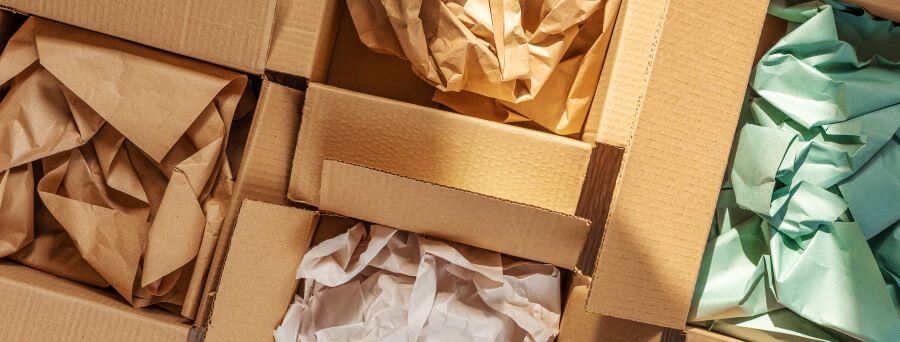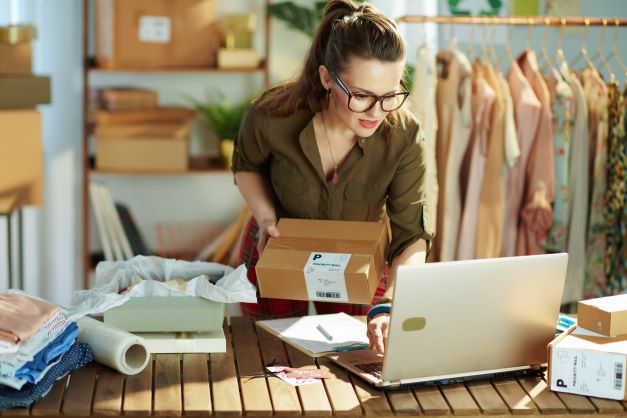Many of us at least caught a glimpse of the recent IPCC report which stated that some of the consequences of climate change are already irreversible.
Many of us at least caught a glimpse of the recent IPCC report which stated that some of the consequences of climate change are already irreversible. This can feel debilitating, however, it stresses the need for businesses to put sustainability on the agenda. If that’s not a good enough reason, though, it also makes complete business sense to partake in these efforts. 62% of Gen Z prefer to buy from sustainable brands and 73% of Millennials are even willing to pay more for ecological goods. So, what can eCommerce retailers do to make themselves greener?
1) Make sure your packaging is sustainable
Before we even get to your products themselves, one of the worst polluters in the eCommerce sector is the packaging. Some regions, like Shanghai, have already started banning non-biodegradable versions. And in other places, sustainable packaging has become more and more sought after. “Rather than using materials that end up in landfills after a single use, the packaging can be composted, recycled, or reused,” the experts at Store Anything explain. “The materials are also ethically sourced to reduce the impact on the environment during the manufacturing process. For example, rather than using petroleum-based inks, soy-based inks are used as a sustainable alternative.”
You can source these fantastic options from many suppliers in bulk, so you should always ask your current ones if they provide eco-friendly options themselves. But a more convenient way to do this is to leave the whole fulfilment process to a service that is made just for that. Several fulfilment companies partner with sustainable packaging manufacturers and give you the option to use exclusively green wrappings, which can reduce the cost for you as a retailer, and in turn, your customers too. Whichever way you go, make sure you advertise this so your buyers know they’re doing their part for the planet when purchasing from you.

2) Sell products that encourage sustainability
Many eCommerce retailers sell products that can be made even more sustainable with minimal effort, whether it’s clothing, furniture, or electronics. For example, opt for recycled and compostable plastic, or source raw materials locally to reduce emissions that originate from transportation. This is your first step towards sustainability and shouldn’t be taken lightly. However, there is something else that you can consider — offering products that encourage an eco-friendly lifestyle for your customers themselves.
Of course, this depends on your product and your vision. But let’s assume, for instance, that you sell funky cutlery and dinnerware. Have you considered adding reusable bottles to your collection, keep cups, or even eco-friendly, plastic-free lunch boxes? If your line is a little more difficult to adjust, consider donating a percentage of every sale to a green charity — you could help plant a tree with every sale, or support endangered animals.
A great business model is selling vintage clothing, which is thank to the clothes resale market in the UK growing by 149% between 2016 and 2022. And it’s very east to do. Just set up an etsy or vinted store, buy some wholesale vintage clothing, and you are good to go.
3) Pick a sustainable delivery method
Transportation is another element that bears a heavy weight on the environment. Maritime transport alone is responsible for 2.5% of global greenhouse gas emissions, and predicted to increase between 50% to 250% by 2050, so eCommerce companies must understand the impact of their delivery strategies. Luckily, they no longer have to rely on highly-polluting vehicles, as more and more services offer green delivery. Cargo bikes and electric cars are great affordable alternatives, especially if you deliver in your area or invest in a fulfilment service that has various centres spread across the country (or the globe).
Whether you offer your customers the option to utilise your green delivery service, or mandate it for every sale where possible, partnering with a courier that provides these substitutes can be extremely rewarding for the planet and get you a step closer towards becoming a carbon-neutral business.
Central to it all is where your stock is held. Rather than a big warehouse, you can get affordable storage options in Tunbridge Wells if you live in Sussex and Kent, that are much better value than the big self storage companies, meaning you can keep your merchandise local to limit car journeys.
4) Reconsider your supply chain
Being green is not just about your product or the way it gets to the end customer. It’s also about your entire supply chain from start to finish — 80% of a typical consumer company’s greenhouse gas emissions come from it. The first step to making it more sustainable is to map out your supply chain and identify your biggest environmental challenges. Reducing the number of suppliers, for example, can have a big impact, especially when you focus on local ones. Transparency is another significant factor: request and assess your suppliers’ data regarding sustainability, and pick the most ethically sourced raw materials.
Whatever you do, you want to simplify and consolidate your supply chain in a way that would last you for years to come, even when you grow or scale up. Ensure you’re nurturing relationships with your chosen suppliers and make sure you don’t leave any empty space in your containers when transporting product or materials. This is an ever-evolving process, so re-evaluate it constantly and use data and artificial intelligence to further streamline your chain, while informing your customers of your efforts.



















































































































COMMENTS